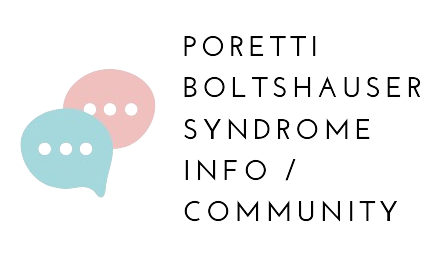When you see a medical journey about PTBHS, or even when you read an MRI or medical report about yourself or your child, it is filled with words that are not that easy to understand. To make it more easy, I made this glossary filled with medical words, sorted by theme.
The MRI
| Cerebellum | The part of the brain that controls balance and coordination. |
| Vermis | The central part of the cerebellum that connects the two halves. |
| Hypoplasia | Underdevelopment or smaller size of a part of the body or brain. |
| Dysplasia | Abnormal development or structure of a tissue or organ. |
| Molar tooth sign | A typical MRI finding seen in some brain disorders, where the brainstem and cerebellum look like a tooth shape. |
| Cerebellar cyst | A small fluid-filled space inside or near the cerebellum. |
| Brainstem | The lower part of the brain that connects to the spinal cord and controls vital functions like breathing and heart rate. |
| White matter | The part of the brain that connects different brain regions and helps send signals. |
| Grey matter | The outer layer of the brain involved in thinking, movement, and sensory processing. |
Symptoms
| Ataxia | Uncoordinated movements or difficulty with balance. |
| Apraxia | Trouble planning or performing movements, even though the muscles work normally. |
| Hypotonia | Low muscle tone; muscles feel soft or floppy. |
| Nystagmus | Fast, uncontrolled eye movements. |
| Developmental delay | Slower than usual development in skills such as walking, talking, or coordination. |
| Speech delay | When a child starts speaking later than expected. |
| Fine motor skills | Small movements using the hands and fingers (e.g., picking up small objects). |
| Gross motor skills | Big movements like crawling, walking, or jumping. |
| Ocular Motor Apraxia | Difficulty moving the eyes to look at something on command. |
| Cognitive function | Thinking abilities like memory, understanding, and problem-solving. |
Genetics
| LAMA1 gene | The gene in which some changes (mutations) cause Poretti-Boltshauser syndrome. |
| Mutation / Variant | A change in a gene’s DNA sequence. |
| Pathogenic | A variant known to cause disease. |
| Heterozygous / Homozygous | Having one (hetero) or two (homo) copies of a gene variant. |
| Autosomal recessive | A condition that occurs when both copies of a gene have a change. |
| Genetic testing | A test to look for changes in DNA that explain symptoms. |
| Carrier | A person who has one copy of a gene variant but does not have symptoms. |
| Congenital | This means it is already present when you are born |
| Chromosome | The structures in cells that contain genes. |

